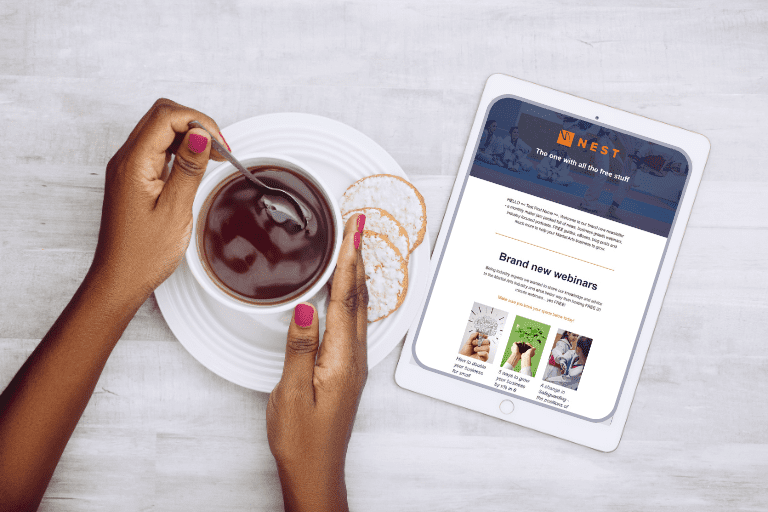Following on from last week’s blog ‘How to design the perfect campaign poster’ where I mentioned utilising a landing page within your campaign materials; This week I am going to expand further on this and cover the basics of creating a landing page and some of the things you should consider.
What is a landing page?
A landing page is usually a page that visitors first see when coming to your website, not to be confused with the home page however. Landing pages are used to promote offers or generate interest in something, such as a ‘free trial lesson’.
Unlike a website’s homepage, Landing pages usually aim to quickly promote one particular offer and capture the visitor’s interest and contact details through very prominent call to actions.
Know what you’re offering
When creating your landing page, it’s important to determine what you’re going to be advertising or offering. Remember this is a focal point you will be directing potential customers towards, so make sure you are clear about how your offer will benefit them.
If it is being tied in with other campaign material, such as that ‘perfectly designed poster’ you produced, then make sure to be consistent with the messaging, design, imagery and expand upon this. DO NOT copy and paste! It is ok to ‘borrow’ from content and use similar elements, but the idea is to generate those bits of information you had to leave out from other materials, don’t copy… expand!
Knowledge is power
Understanding your target audience is the next step once you have an idea of what your offer is. Getting a good understanding can help shape the message and content within the landing page, so it’s important to know who you’re trying to target.
For example, if this is an offer promoting a ‘children’s martial arts class’ it may seem like a good idea to aim the promotion towards children; however, the parents of these children are far more likely to engage with the landing page, so it would be more beneficial to base your wording and imagery around things parents would like to see for their children.
“What’s in it for me?”
The key selling point of any marketing materials from a customer perspective is ‘What am I getting out of this?’, and that’s exactly what you need to tell them! If there are benefits to your offer, make them known; If you are offering a free trial lesson, be clear that’s what you’re offering and ensure this message stands out.
To the point
When it comes to the layout of your landing page, consider the visitor experience. The content needs to be easy to navigate with clear sections of information. Utilise bullet points to help make information quickly digestible and have prominent call to actions to guide visitor actions.
Don’t try to oversell the offer; it already has its own page dedicated to it, so try not to go overboard with things like “FREE, FREE, FREE!” remember visitors want to know what’s in it for them and they want to know quickly and easily.
If you have additional information you want to include, add this to a page on your website and provide a link to it on the landing page instead. This helps keep your offer and message on track, short and sweet.
The finer details
Before your landing page goes live, there are a few extra details and final checks to think about. These additional elements could really help to make your landing page become more engaging.
It’s important to think about having all key elements of information above the fold. What is ‘above the fold’? Everything you can see in your browser window without having to scroll down is content that is above the fold. This is the very first bit of information a visitor will see, so it is a good idea to make sure your call to actions and content sits above this on your landing page.
Try to use keywords in your title to enable higher rankings within google search results. This can be further emphasised by using key phrases in the content. This is a great way of getting people using google for similar searches to potentially come across your page.
And finally, try to include your social media share buttons. This helps people share the landing page with others; the initial visitor to your website may not be interested, but they may know someone who may be, having these links helps them to share it.
For some inspiration and good examples of landing pages you can check out this link.
If you found this brief overview useful, why not consider sharing it with your friends via Facebook or Twitter on the links below.
If you felt something was missing or have any questions, I’d love to hear from you. jack@nestmanagement.co.uk





